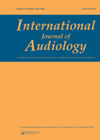
Journal Reviews
Postoperative bleeding rates after inferior turbinate reduction using three different techniques
The most serious complication of inferior turbinate reduction surgery is postoperative bleeding, soon after the operation or later on. In this study comprising 751 patients, the authors have compared three common methods. Partial turbinectomy involved resection of the inferior turbinate,...
Can diet alone be used to treat laryngopharyngeal reflux?
In this crossover observational study, a low-fat, low-quick-release sugar, high-protein, alkaline, and plant-based diet was investigated as a single treatment for laryngopharyngeal reflux (LPR). Authors recruited 50 participants with demonstrated LPR on hypopharyngeal-oesophageal multichannel intraluminal impedance-pH-monitoring (HEMII-pH), off acid suppressive...
Doing it for yourself: self-management in speech and language therapy
People with stroke aphasia are traditionally discharged from speech and language therapy when they have plateaued; meaning they are making no further progress in language recovery. This service model has been problematic, leading to people being discharged when they are...
Why do some people get their smell back so quickly after a COVID infection whilst others don’t?
Of course, we are all too familiar with the effect that COVID-19 infection has on our sense of taste and smell, but why do most patients get better whilst, for many, the misery lingers on and on? This paper looks...
When to operate on a patient without chronic disease?
As ENT surgeons, we spend a lot of time managing chronic rhinosinusitis, so a review and update on the management of the acute disease is always helpful. The standard medical treatment of antibiotics, nasal steroids and nasal decongestants are reported...
Algorithms to diagnose NIHL
Finding an efficient diagnostic tool for noise-induced hearing loss (NIHL) has been of research interest for a long time. There are several algorithms that compare expected age-related deterioration of hearing with the actual audiogram. This study aimed to compare a...
Oesophageal atresia and trachea-oesophageal fistula: a perspective on dysphagia management from Turkey
Children born with oesophageal atresia with or without trachea-oesophageal fistula usually receive early surgical repair to create tension-free anastomosis that facilitates oral feeding. However, many children are at risk of problems related to subsequent dysphagia. This includes respiratory, nutritional, motility...
Risky behaviour: do care homes follow dysphagia recommendations?
A huge proportion of elderly people living in residential care homes will develop dysphagia. In Australia this is estimated at close to two thirds of all residents. It is the role of the speech and language therapist to make recommendations...
A therapeutic algorithm for tracheoesophageal periprosthetic leakage
Tracheoesophageal voice prosthesis leakage can be intravalvular (more common) or periprosthetic (focus of this study). The authors studied the causes of periprosthetic leakage among 115 patients attending for voice prosthesis management (1374 clinic attendances) treated between December 2014 to December...
The impact of bilateral implantation on language outcomes
An American study retrospectively looked at the language outcomes of 204 children implanted either bilaterally, sequentially or unilaterally. All children received their first implant before the age of three years, and language measures were collected when the children were aged...
Benign oesophageal strictures: overview and management strategies
Benign oesophageal strictures may have several attributable causes including caustic injuries, long-term acid reflux, eosinophilic oesophagitis, anastomotic strictures and endoscopic therapy. Endoscopic dilation via bougies or balloon dilators may treat most strictures successfully and satisfactorily. However, in some situations treatment...
Better or barrier: what do healthcare professionals think about teletherapy?
Most healthcare professionals will have had to dabble in using some kind of telehealth platform over the last 18 months or so. And most of us will have had some reservations, or have colleagues who just weren’t sure about Zoom,...














